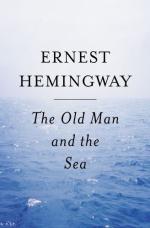|
This section contains 3,041 words (approx. 11 pages at 300 words per page) |

|
SOURCE: "Fakery in The Old Man and the Sea," in College English, Vol. 24, No. 3, December, 1962, pp. 188-92.
In the following essay, Weeks enumerates the errors in descriptive detail in The Old Man and the Sea, pointing out that the realism characteristic of Hemingway's "better work" is absent in the novella and taking this as an indication that Hemingway's "view of the world has gone soft"
From the vignettes and stories of his first book, In Our Time, to his last, The Old Man and the Sea, Ernest Hemingway repeatedly made skillful use of animals to epitomize the subjective state or the situation of his characters. Nick Adams' trout holding itself steady against the cold current of the Big Two-Hearted River, Francis Macomber's gut-shot lion standing off death in the tall grass, the huge, filthy vultures keeping a deathwatch on Harry on the plains at the foot of Kilimanjaro...
|
This section contains 3,041 words (approx. 11 pages at 300 words per page) |

|


